At times Soviet Union there were no conflicts related to the calculation of fees for water consumption. There were uniform tariffs, and the price was not high. But there was a significant minus - people did not think about saving, so a lot of water was spent inappropriately.
AT modern society more and more people are talking about Natural resources must be preserved if we want to leave something to our children and grandchildren. But speaking is one thing and doing is quite another. This is our mentality, we will not save water until we have to pay for each used cube. That is why the government initiated the installation of water meters.
A common house meter is installed at the entrance of the house
The idea is good, but apartment owners should buy the device, and not all tenants have the financial opportunity to do so. In addition, the question arose of paying for common house expenses (cleaning in the entrance, watering flowers and flower beds under the windows, leaks in basements, etc.) In order to solve these problems, it was decided to install a common house water meter.
Features and principle of operation of the device
The counter is installed at the entrance to apartment house. The costs for the purchase of the device and its installation are covered by the tenants. It is convenient when there is a meeting of tenants, and his head, who is responsible for resolving such issues. The meter shows the amount of water used in the house. Such devices can be different in power and principle of operation.
When buying a meter, you need to consider that a huge amount of water will pass through it. Therefore, if for an apartment you can purchase an inexpensive device of medium power, then for an apartment building you need a powerful device that works with a turbine. Under the pressure of water, the turbine rotates and starts the counting mechanism. In addition to turbine, there are jet and combined devices. Also, all water meters are divided into dry and wet (wet ones are immersed in water, and dry ones cannot be wetted).
When buying a common house meter, you also need to pay attention to:
- the diameter of the nozzles of the device must match the diameter of the pipes in the pipeline;
- there are meters for horizontal and vertical installation, there are also combined ones, but they are more expensive;
- a common house meter can be designed for cold and for hot water. Each device has a permissible temperature limit. That is, not all meters are suitable for metering hot water, you need to carefully read the description of the device.
Steps before installing a common house water meter
In any team there are people with opposing opinions. The installation of a common meter applies to all residents of the house, so it is important to make a decision on its installation together. For this, you need:
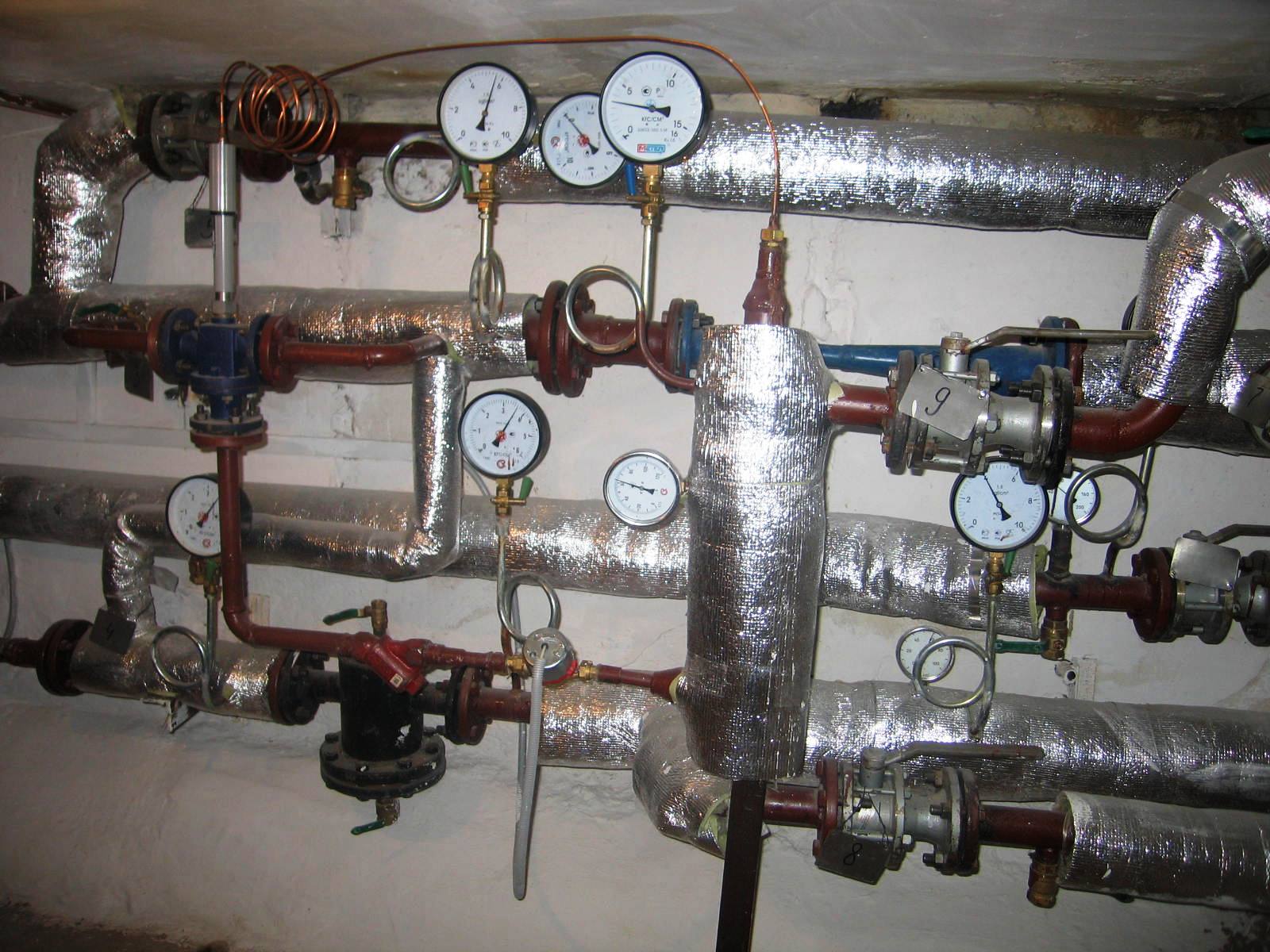
The first step is a meeting of tenants for a group signing of the act
- organize a meeting of tenants and draw up an act in which, confirming their consent, all participants sign;
- if the act is not drawn up, it is forbidden to start the installation of a water meter;
- an estimate is drawn up, which takes into account the cost of the device and the installation fee;
- a fee is calculated for each apartment, and after the funds are collected, a meter is bought.
Before installing the meter, it is also necessary to draw up a connection diagram, which indicates:
- the place where it is planned to install a water meter;
- device type and model;
- the company responsible for the installation;
- test runs of the system are also indicated.
The scheme is approved by the water utility, but first its employee must check the condition of the plumbing system in the house. If everything is fine, he issues a permit, if not, you will have to carry out repairs first. Please note that residents of the house pay for the installation of a water meter, checking in the water utility and other actions.
According to the legislation, the installation of a common house water meter is carried out by specialized companies that have licenses and state permission to perform such work. If the installation of the water meter is performed with violations, its readings will not be taken into account. On the installed counter water utility workers cling to the "seal" in order to exclude the possibility of fraud.
Checking the water meter
Everyone knows that the meters installed in the apartment are subject to regular checks in the water utility. The total counter is also subject to control. After all, his testimony must be accurate. In addition, representatives of the water utility must be sure that the seal is not broken, and no one has manipulated it, trying to change the testimony in their favor.
Given that the installation of a common house water meter is more difficult than that installed in an apartment, it is better to check it without removing it. This procedure is more expensive, but no one will damage the device, and its parts will not loosen.
Payment principle
General building counter cold water shows the number of cubes spent in the building. Now, a new column appears in the receipt: "common house needs." To calculate them, the readings of the devices installed in each apartment are subtracted from the data of the common house meter. If there are no water meters in the apartment, its owners pay for each person registered in it in accordance with the standards specified in the law.
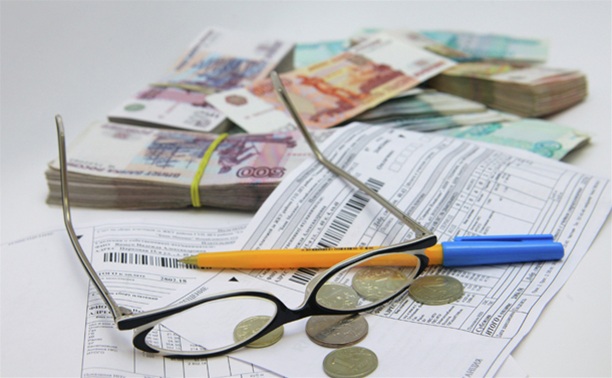
The receipt for water will indicate the column "common house needs"
This fee is converted into cubic meters and is also deducted from the total meter. The remaining amount is divided by the number of apartments. If the house does not have a hot water meter installed, then the fee for it does not change (you pay either according to a personal water meter or according to state standards). If suddenly the general meter breaks down, the water charge will be calculated based on the data for the last three months (average amount).
Advantages of a common house water meter
Thanks to a common house meter, you can easily detect a water leak and eliminate it in time. Other benefits are tangible for the state. The first is that water expenses are covered in the event of a pipe break in the building, or if someone underpays for people who are not registered but live in the house. So now water utilities practice installing not only cold, but also hot water meters. Moreover, hot water is more expensive.
Disadvantages of a common house water meter
In Russia, many citizens are dissatisfied with the installation of common meters. Already too large sums are running up for common house services. There is a feeling that a tradition of collective washing of elephants has been started in the house. Seriously, people do not understand where so much water flows. Even if the house has a separate faucet and the cleaner uses it, well, let's say she spends 2-3 cubes per month. But other? The reasons for high charges can be caused by the following reasons.
- In apartments where there is no water meter, more people live than prescribed. Each person consumes a certain amount of water, because he needs to bathe, wash clothes, wash dishes, etc. Ie. if 2 people are registered in the apartment, and 5 live, there is no question - where do the extra cubic meters come from. The question arises why in this situation should suffer ordinary people because it is a problem of the state. But, the state is not a separate living being, each of us is a part of this very state. The money we pay for water does not go anywhere. They are needed not only to pay workers from the water utility, but also to measure and improve water quality, replace and repair pipes, etc. Regulatory authorities are not able to keep track of each apartment, and fees for services must be charged, hence the problem arose. People don't have to pay extra money. The best solution would be a meeting of the TSC, and a conversation with irresponsible tenants about the advisability of installing a meter in an apartment. If the conversation did not bring results, the only way out is to submit an application to the water utility, which indicates all the people who actually live in this apartment. The application must be signed by the majority of TSC participants.
- Different times for taking readings from water meters. It’s good when there is an agreement that water readings from meters located in each individual apartment and common cold and hot water meters are taken on the same day. And so it turns out that someone pays in the first days, someone in the fifteenth. During this time, a significant difference in the readings of the instruments accumulates and misunderstandings arise with payment.
- Pipes are leaking somewhere. The damage in the pipes may not be noticeable and the leak is small, making it quite difficult to detect. For a month, the number of cubes wasted in vain accumulates a lot. You need to check the condition of the pipes in the house yourself or call specialists.
A common house meter is a necessary thing, but many people are trying to refuse to install it, or to delay it.
You should not be afraid of common water meters, you just need to choose responsible directors of the TSC who will monitor the fair calculation of payment and assist in resolving conflict situations.
In addition, each person needs to change his attitude to society, to resources, becomes more honest and conscious. Only after that, common house meters will not cause so much controversy and discontent, and the quality of drinking water will change for the better.
Previously, few people thought about accounting for resources that were supplied by public utilities. This was due to the fact that utilities cost literally a penny, however, today everything has changed.
In the context of constant tariff increases, federal law No. 261 “On Energy Saving and on Increasing Energy Efficiency” was created, which obliges to install a common house cold water meter.
What is a common house cold water meter for?
A common house cold water meter is designed to take into account the total water readings, or, more simply, to take into account the volume that all owners of a residential building consume. Indeed, today water consumption is quite large, and the meter allows you to pay less for drinking cold water. In addition, the installation of a common house meter allows you to detect leaks in pipelines.
Leakage payment for water leakage from the pipeline is distributed by the public utility among the residents, and after installation, there will be no additional payment for the residents, since the organization that supplies the house with water will have no reason to do so.
In addition, if residential buildings do not install common house water meters, then in this case they will inevitably begin to grow, which are already not low.
But there is also a possibility that, after the installation of a common house cold water meter, the consumption fee will be unfairly charged between the owners high-rise building. That is, this can be, probably, if one owner uses water sparingly, while the other does not spare it.
To avoid this situation, a representative of the utility company must perform a so-called audit, that is, find out how many people actually live in each apartment. And then, based on this information, distribute who should pay how much.
Is it necessary to install a common house cold water meter
According to the adopted federal law of the Russian Federation of July 1, 2012 No. 261, all apartment buildings must install common house water meters. At the same time, each house, according to the law, must have a common house water meter for hot, cold water, as well as for heating and electricity. In addition, each apartment, according to this law, must have individual metering devices.
Is it required to hold a meeting for the residents of the house to decide on the installation of a common house cold water meter?
Answering this question, we can say that, of course, it is necessary. When deciding on the installation, tenants must decide by voting whether to install a common house water meter or not. 
However, if the tenants of an apartment building did not accept to install common house water meters, then the company that provides the house with water will make a decision on its own. That is, in this case, the residents of the house no longer need to discuss the issue of installing a water meter.
Purchase and installation of a common house water meter
Many owners of apartment buildings have such a question, who should pay for a common house water meter? Since the meter will be the property of the apartment building where it is installed, then only residents will have to pay for its purchase.
But the owners are also asking this question, at whose expense should the common house water meters be installed, and who should pay for their maintenance? With regards to the installation and maintenance of a common house meter, according to Article 13.ch.5 of the Civil Code of the Russian Federation, residents of the house must pay for the installation procedure and maintenance of the meter.
Scheme of installation of a common cold water meter
 If your apartment building does not have a common house meter, then sooner or later it will be installed. As for the maintenance of this device, the management company will deal with this issue, and the installation itself must be carried out at the initiative of the residents of the house. Accordingly, the installation will also be carried out at the expense of the residents.
If your apartment building does not have a common house meter, then sooner or later it will be installed. As for the maintenance of this device, the management company will deal with this issue, and the installation itself must be carried out at the initiative of the residents of the house. Accordingly, the installation will also be carried out at the expense of the residents.
Before a common house meter is purchased, the residents of the house at the meeting should draw up an installation diagram, as well as discuss such issues as when, by whom and at whose expense the installation will be carried out. However, the water meter installation diagram looks something like this:
- The place of installation of the water meter is selected.
- It is determined which type and model of the counter will be installed.
- The company that will install this equipment is selected.
- In addition to the installation, the scheme indicates the test launches of the water supply system.
- After complete installation, the meter is registered with the organization that supplies your home with water.
After the installation diagram has been drawn up, the next step will be to check the condition of the pipeline of your house. In order to check the state of communication, it is necessary to invite an inspector from the city water utility for inspection. However, it should be borne in mind that the check is not free, that is, it is also carried out at the expense of the residents.
If the pipeline is in good condition, then the inspector issues a permit for installation work. In the event that the water supply system has been checked and it does not comply specifications, then it will need to be repaired, respectively, at the expense of the residents.
In addition, only those firms and companies that have state licenses and permits to carry out such work are allowed to carry out work on the installation of this equipment. 
Verification of common house water meters
After the meter is installed in the water supply system and registered, it will be serviced by the company that services your home. However, after a certain period of time has elapsed, a check of the common house meter must be performed.
Everyone knows that it is necessary to pay for checking individual water meters, and therefore residents may have such a question, at whose expense should a scheduled check of the device take place? As previously mentioned, what kind of common house water meter is the property of the house where it is installed. Based on this, the verification will be carried out at the expense of the tenants.
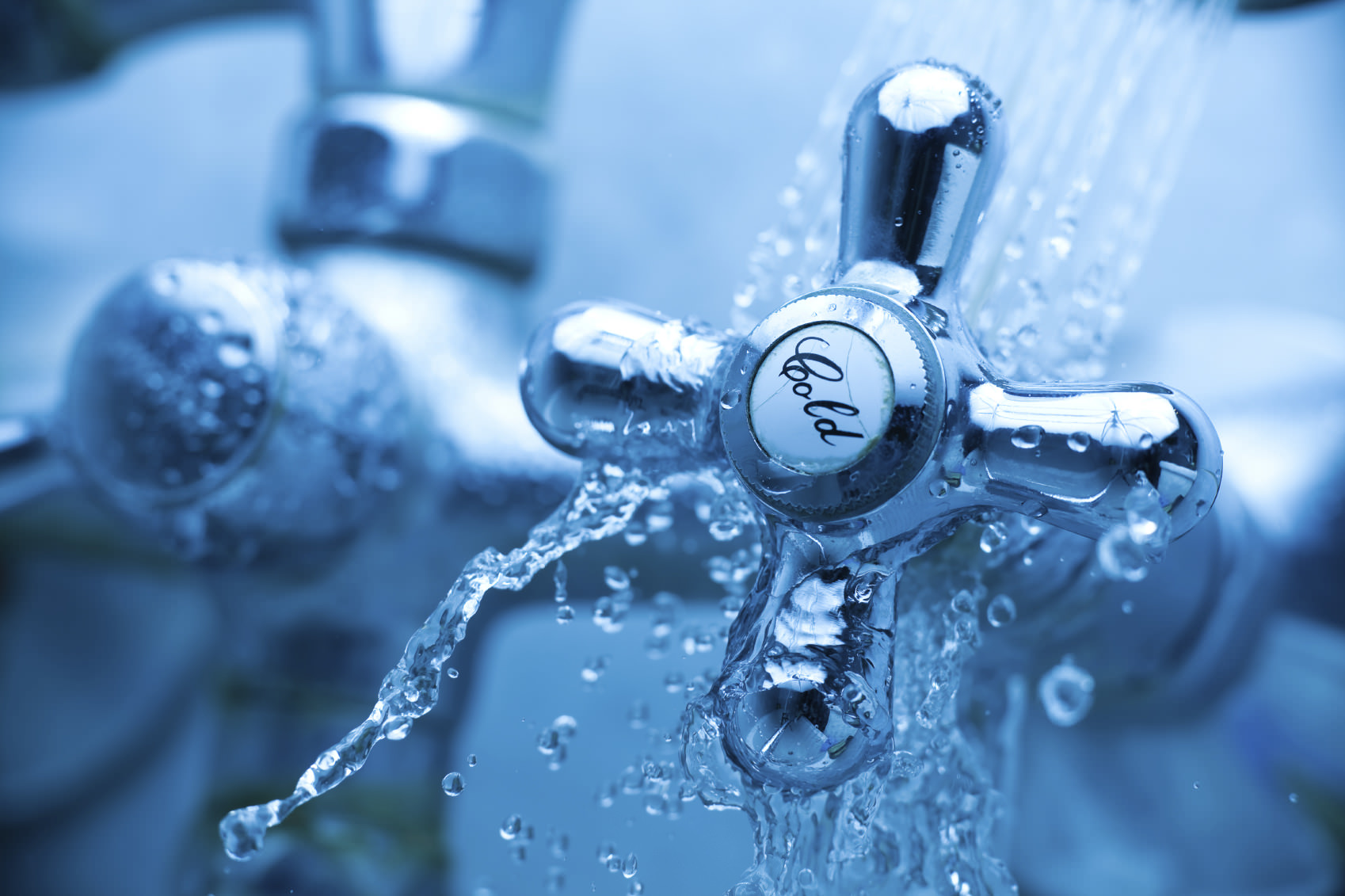 Typically, such a device is checked without removal, since it is more difficult to maintain than a conventional one. Checking this device is necessary for the purpose for which ordinary water meters are checked, that is, to determine the serviceability and accuracy of the reading.
Typically, such a device is checked without removal, since it is more difficult to maintain than a conventional one. Checking this device is necessary for the purpose for which ordinary water meters are checked, that is, to determine the serviceability and accuracy of the reading.
In addition, if you do not check this device, then the city water utility will issue a fine, respectively, it will be distributed on the water bill to each owner. Therefore, it is important to timely check the common house metering device.
But it is also worth remembering that you will have to pay more for a check without withdrawal than for a regular one, however, it justifies itself.
Ignoring the installation of a common house meter
Residents, according to the law, are obliged at their own expense to purchase, install and maintain a common house metering device. In the event that the installation is ignored, then the refusal will be considered already in court. 
That is, if the owners of the apartment building lose the claim, then in this case they will have to pay for the services of a lawyer and the costs of the court, not to mention the penalties from the service organization. In addition, the court will issue a ruling where, without fail, at their own expense, the tenants will be required to install the device.
Installing a common house metering device allows all owners to significantly save money. After all, this device allows you to exclude the charge for the total volume of water, which allows you to reduce the bill of each tenant of a multi-storey building.
I live in an 80-apartment building. In the autumn, common house meters for heat and water were installed in it. But most of the residents refused to pay for the installation of meters. Now the service organization calculates utility bills as follows: those who paid for the installation are charged according to the meter readings (I am among them), those who refused - according to the standards. As a result, the payments of the former increased several times. I have a pension of 6,000 rubles. the amount of utility bills increased to 6,950 rubles. Tell me, are the actions of our service company legal, and if not, how should it be according to the law?
Illegal. Let's start with the fact that the installation of common house meters (heat and water meters) is carried out at the expense of homeowners, because they belong to common property apartment building. These are both private apartment owners and the municipality (if some of the apartments in the building are not privatized).
But the service organization can demand money for these meters (their purchase and installation) only through the court. And, of course, the funds spent cannot fall on the shoulders of only those tenants who pay voluntarily. Therefore, before going to the savings bank for payment
next receipt, write a collective request addressed to the head of your service organization with a request to submit a cost estimate for the purchase and installation of these meters. Write the application in free form and in 2 copies. Give one to the management of the management company, on the second they must sign, put the date and number of the incoming document.
The management company is obliged to respond to you within 30 days. Moreover, the answer must be supported by copies of checks, payments or other documents confirming the amounts spent by the management company.
And after that, you have every right to demand that the amount announced in the answer be divided among all apartment owners (including the municipality) in accordance with the area of \u200b\u200bthe apartment. And then you can really find out how much you personally have to pay for the installation of common house meters without paying for your negligent neighbor.
As for the payment of utilities, after the installation of common house meters, their readings must be taken into account, regardless of whether the person paid for the common house meter or not.
Therefore, your next step should be the same written requirement for the Criminal Code to give a detailed calculation of your utility bills. From it you will see whether you pay only for yourself or for your neighbor too. If its payment obligations were assigned to you, then also in writing
demand recalculation, and in case of refusal, go to court.
The Unified City Service reminds you: the Federal Law No. 261-FZ of November 23, 2009, adopted in our country, requires all owners of residential premises to install common house and individual meters for water, heat (if possible), gas and electricity. Please note that in order to stimulate this regulation, the Government of the Russian Federation has developed a program to increase resource fees for residential and non-residential premises that are not equipped with meters.
Based on current realities, in order to save money, residents of multi-apartment residential buildings should take care of the problem installation of common house water meters and warmth. Most apartment owners have already been able to see for themselves the amount of savings when installation of individual water meters in residential areas. But, as you know, payment for water consumption consists not only of accounting for water consumption in individual residential premises (apartments). A separate item of expenditure is the payment of resources for common house purposes. After the installation of common-house (in-house) meters, all residents of an apartment building begin to pay for water and heat consumption not according to standards, but according to actual use. That is installation of common house meters allows you to achieve transparency of costs and not pay for water and heat that did not reach your home.
General house water meters this is the best and most effective method energy saving. Intra-house and industrial water meters make it possible to identify and promptly eliminate leaks in the water and heat supply systems of a residential building or industrial premises.
In accordance with their purpose, common house and industrial water meters have different design features and specifications.
Wet multi-jet water meters- are used mainly in rooms subject to constant or periodic flooding. A distinctive feature of this type of water meters is the counting mechanism immersed in water.

Multi-jet cold and hot water meters- used to account for water consumption in individual or multi-apartment low-rise buildings. The counting mechanism of the counter is separated from the flowing water. The division of the flow into separate jets provides a more uniform load on the impeller and its supports, which increases the reliability of the devices.
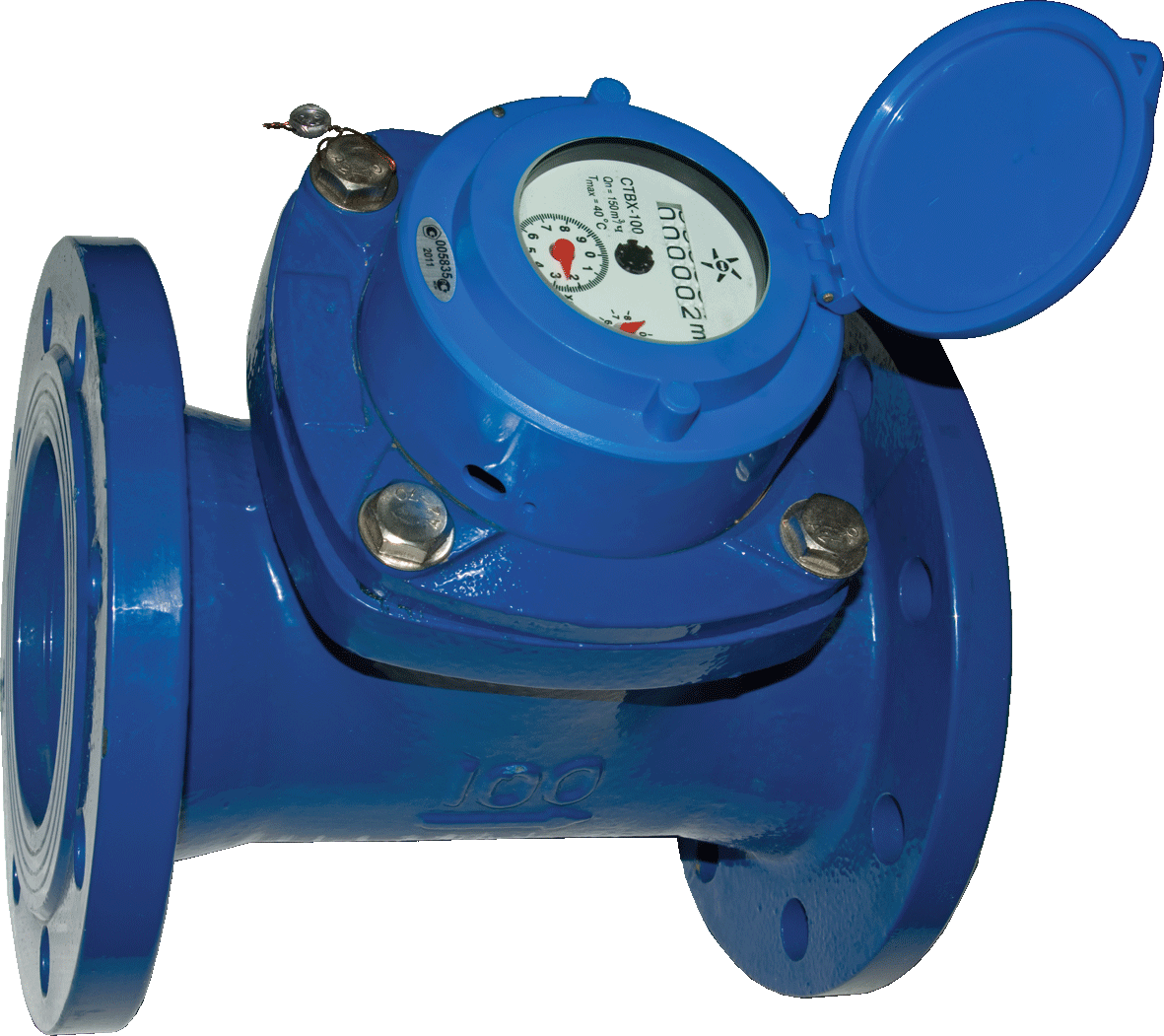 Turbine water meters- designed to account for a large volume of water in multi-storey residential buildings, industrial premises and administrative buildings. The counting mechanism is separated from the flowing water (dry type). The use of this type of flowmeter does not lead to a decrease in pressure in the water supply system at maximum consumption rates.
Turbine water meters- designed to account for a large volume of water in multi-storey residential buildings, industrial premises and administrative buildings. The counting mechanism is separated from the flowing water (dry type). The use of this type of flowmeter does not lead to a decrease in pressure in the water supply system at maximum consumption rates.

They combine the advantages of turbine and multi-jet water meters. The turbine mechanism is connected automatically at high flow rates in the water supply system. Stable operation of the meter is possible with any fluctuations in water flow.
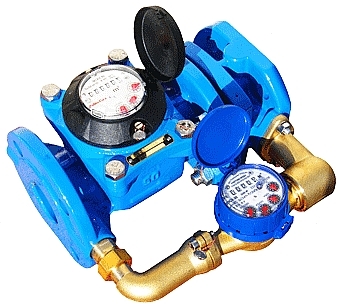
Combined water meters with bypass line- a variety of the above water meters, distinctive feature is the presence of a bypass line for temporary accounting of small volumes of water.
Most common house and industrial metering devices have the ability to device pulse output for remote reading of indications (pulse models).
United City Service provides installation, replacement and maintenance of general house and industrial water meters. These services are provided for individuals and organizations located in the territory Moscow(CAO, SAO, SAO, ZAO, VAO, SVAO, SZAO, SEAD, SZAO) Moscow region (
Vladimir Gor
3 years ago
An individual meter, a water meter, is the initial link in an energy-saving program for the efficient consumption of energy resources, in this case, tap water. Only when installed in all apartments of an apartment building individual devices accounting, and then a common house meter of water entering the house, and proper accounting of such a resource as water will be established. It makes no sense to oppose one counter to another, since they have the same function to count the resource, the tasks are slightly different.
An individual, apartment meter counts your personal water consumption, that is, everything that you spent, you paid for it.
The general house meter has a slightly different task, to identify some resource losses, after subtracting the amount of water used, summing up the readings of all individual, apartment meters from the total indicator of the general house meter received by this resource house.
In the absence of meters in the apartment, residents pay according to the standard. If as many people are registered as they live in the apartment, then, as a rule, you pay an unreasonably high amount, since you do not use so much water.
And in another situation, which is not very rare, one or two are prescribed and the consumption standard is calculated for one or two, respectively, and five or more people live, and the standard for the number of registered people, naturally they consume an unlimited amount of water, and payment goes to the number of registered, according to the standard. And here the interesting begins, on the general house meter there remains a certain amount of water used up, that is, counted by the general meter, but not paid either according to the standard or according to the readings of individual meters, and the whole house is scattered with the remaining unpaid resource. It turns out that for negligent and probably cunning owners of residential premises, in which unregistered, unregistered tenants live, all tenants of the house pay. So draw your own conclusions. We are obligated to install individual meters by the law, accompanied by our own interest, but general house meters, we are obliged to establish the law. Good luck.
Vladimir Gor
What does your private sector have to do with it. We are talking about an apartment building and the installation of a common house meter at the inlet of the water supply to the apartment building. The meter is placed on the border of the balance sheet of the water supply system. And this border is the main wall of the house. Before it, the water is not yours, but the supplier of the resource, and you don’t give a damn what will happen to it and who takes it apart to your main wall. After the meter, this is the internal wiring of the water supply system of an apartment building, and its first point is a common house meter, and after it, all the water in the house water supply is yours and is subject to payment. All analysis of the water takes place in the premises of this house, where there are no gardens and fire pumps in the apartments and basements. What is being done on the highway to the common house meter, for example, we don’t give a damn. Our measure of what we pay for is “digits on the common house meter” and taking readings every day every day. Example: May 25 on counter "0", live for a month, check the counter on June 25 - "1560". Received in a month, that is, 1650 cubic meters of water were dismantled by residents. if there is no analysis, the meter stops. If we do not pour water in vain, the analysis of water and, accordingly, the flow to the meter is less. What, misunderstandings - that, and that it is not serious, and what does your city have to do with it. Common house counters do not depend on cities, countries and planets, they stupidly "count" how much a resource has passed through them, in this case water. Read the answer carefully if you ask a question. Good luck.- 3 years ago





